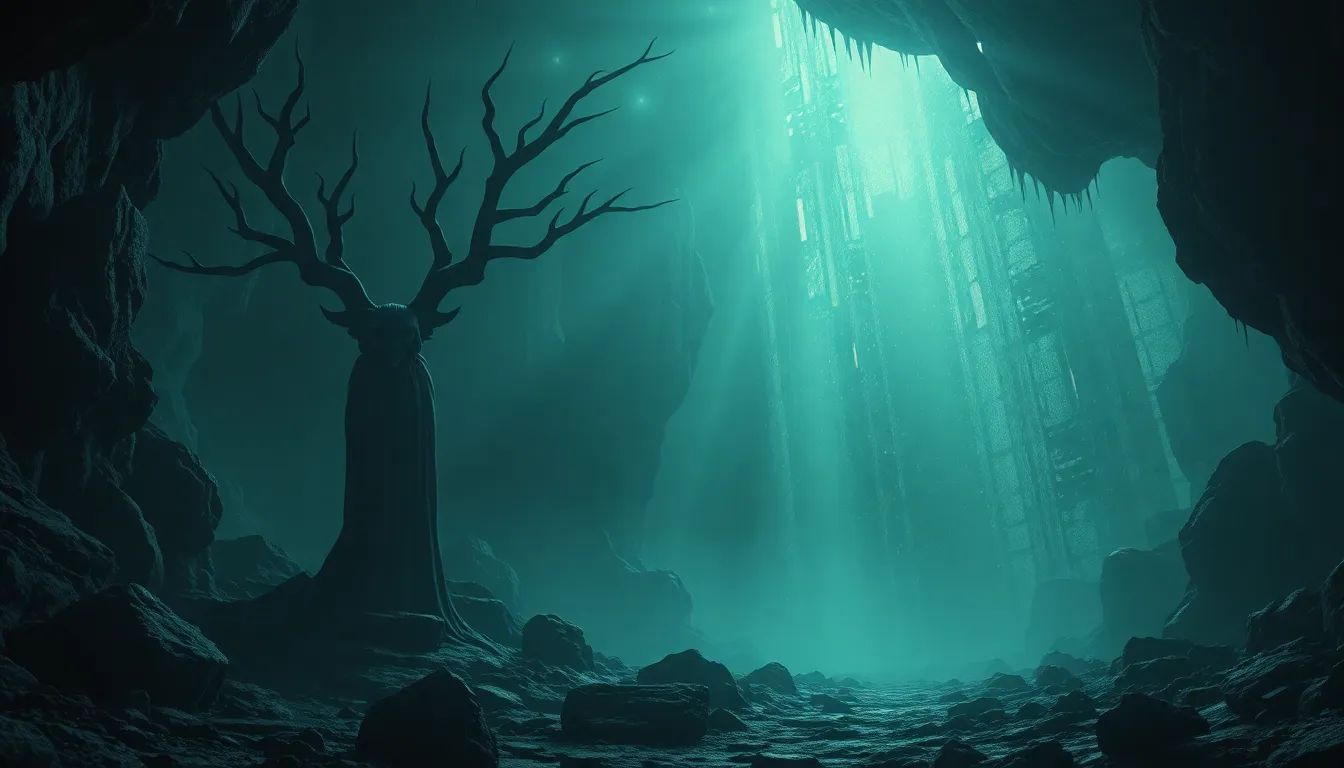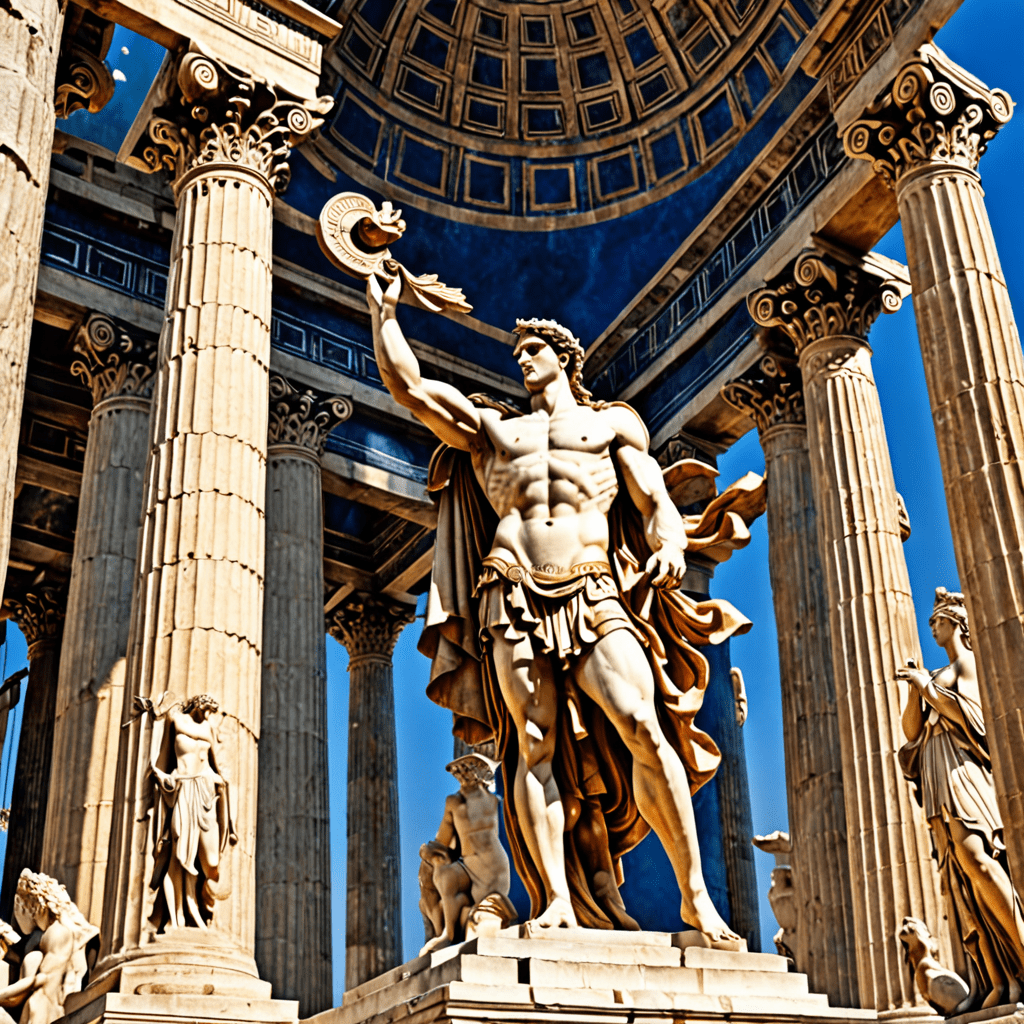The Underworld: Myths That Explore the Nature of Life and Death
1. Introduction to the Underworld in Mythology
The concept of the Underworld has fascinated humanity for millennia, serving as a rich tapestry of beliefs and narratives that explore the profound themes of life and death. Across various cultures, the Underworld represents a realm where souls transition after death, reflecting collective anxieties and hopes regarding mortality.
Myths surrounding the Underworld are not merely tales of despair; they offer insights into the values, fears, and spiritual beliefs of a culture. These stories aim to explain what lies beyond death, providing comfort, moral lessons, and a framework for understanding the inevitable end of life.
This article will delve into the myths of the Underworld from different cultures, examining their significance and how they mirror human perceptions of life and death.
2. The Underworld in Ancient Greek Mythology
In Ancient Greek mythology, the Underworld, often referred to as Hades, is a complex structure comprising different regions that reflect the souls’ fates based on their earthly lives. The central figures include Hades, the god of the Underworld; Persephone, his wife; Charon, the ferryman; and the Furies, who punish wrongdoers.
- Elysium: A paradise for the virtuous, where heroes and those favored by the gods reside in bliss.
- Asphodel Meadows: A neutral place for ordinary souls who lived average lives, neither rewarded nor punished.
- Tartarus: A dark pit of torment reserved for the wicked, where they face eternal punishment.
The Greeks believed in a system of judgment, where souls were assessed by three judges: Minos, Rhadamanthus, and Aeacus. This judgment determined their final resting place, highlighting the importance of moral conduct during life.
3. The Egyptian Underworld: Duat and the Journey of the Soul
The Egyptian view of the Underworld, known as Duat, is intricately tied to their beliefs about the afterlife and resurrection. Duat is a realm that souls traverse after death, facing various challenges and tests.
- The Book of the Dead: This ancient text serves as a guide for the deceased, detailing spells and incantations necessary for navigating Duat.
- Osiris: The god of the afterlife, Osiris symbolizes resurrection and rebirth, having himself been resurrected after being killed by his brother Set.
In this complex belief system, the heart of the deceased was weighed against the feather of Ma’at, the goddess of truth and justice. A balanced outcome allowed the soul to enter the afterlife, while a heavy heart led to annihilation.
4. Norse Mythology: Hel and the Realm of the Dead
Norse mythology presents a duality in its afterlife concepts, primarily through Hel and Valhalla. Hel, ruled by the goddess of the same name, is a realm for those who did not die a heroic death.
- Valhalla: A majestic hall where warriors who died in battle are taken by Valkyries, destined for eternal feasting and battle preparation for Ragnarok.
- Hel: A cold, shadowy place where souls who did not achieve honor in life reside, reflecting the Norse value placed on bravery and valor.
The Norse believed in fate, embodied by the Norns, who controlled destiny. This belief shaped their views on death, suggesting that one’s end was not entirely within their control but guided by fate.
5. The Underworld in Mesopotamian Myths
In Mesopotamian mythology, particularly among the Sumerians and Babylonians, the afterlife is often depicted as a dreary, shadowy existence. The Underworld is a place where all souls, regardless of their earthly actions, ultimately go.
- Ereshkigal: The goddess of the Underworld, she rules over the dead and embodies the inevitability of death.
- Nergal: The god associated with war and the Underworld, representing the harsh realities of death and fate.
The Mesopotamian underworld was viewed as a bleak realm where souls lead a shadowy existence, lacking the joy or punishment found in other mythologies. This reflects their pragmatic understanding of life and death.
6. Indigenous Beliefs: The Underworld in Native American Mythology
Native American beliefs about the Underworld vary significantly among tribes, often emphasizing the importance of nature and the cycle of life and death. Many tribes view the afterlife as a continuation of existence, where ancestral spirits play a crucial role.
- Spirit Journeys: Many tribes believe in journeys that the soul takes after death, guided by spiritual beings.
- Ancestor Reverence: Ancestors are honored and remembered, with the belief that they influence the living world.
This cyclical view of life and death reflects a deep connection to the earth and the belief in the interconnectedness of all living beings.
7. The Underworld in Asian Mythologies
In Asian mythologies, the Underworld is also a significant theme, particularly in Hinduism and Buddhism. Yama, the god of death, plays a central role in these beliefs.
- Reincarnation: Both Hindu and Buddhist traditions emphasize the cycle of birth, death, and rebirth, influenced by karma.
- Chinese Mythology: The Yellow Springs is a realm where souls go after death, with ancestral worship influencing their journey.
The ideas of karma and moral conduct in life have profound implications for how individuals perceive death and the afterlife in these cultures.
8. The Underworld in Modern Interpretations
Contemporary literature and media continue to explore themes of the Underworld, often drawing from ancient myths for inspiration. These modern interpretations reflect ongoing human concerns regarding life and death.
- Dante’s Inferno: This literary work draws heavily from classical mythology, presenting a vivid depiction of the afterlife.
- Video Games: Many games, like “God of War” and “Hades,” incorporate Underworld themes, allowing players to engage with these ancient narratives.
These interpretations highlight the enduring nature of these myths, as they resonate with modern audiences grappling with existential questions.
9. Psychological and Philosophical Perspectives on Myths of the Underworld
The Underworld serves as a powerful symbol for understanding human fears, desires, and the inevitability of death. Psychologically, Carl Jung viewed the Underworld as a representation of the unconscious mind, where repressed fears and desires reside.
Myths of the Underworld allow individuals to confront their mortality and explore the deeper aspects of the human psyche. Through these narratives, people can find meaning and comfort in the face of the unknown.




